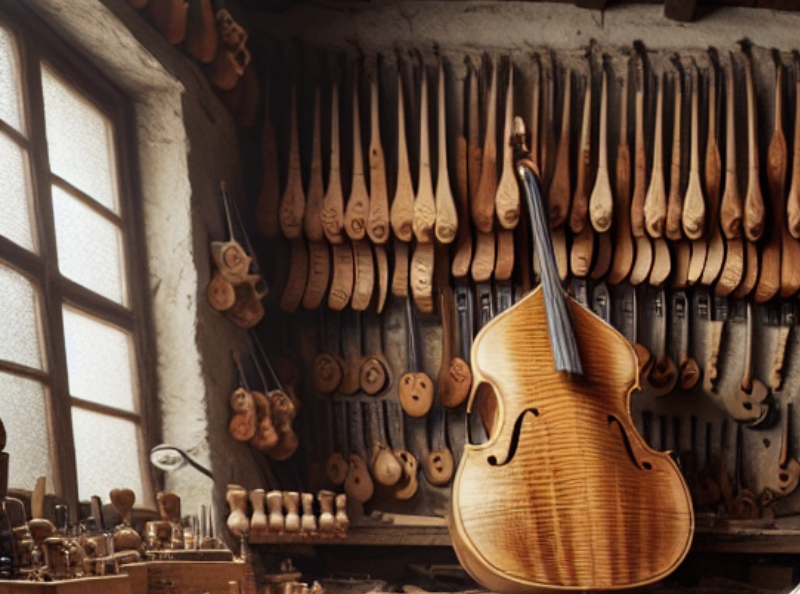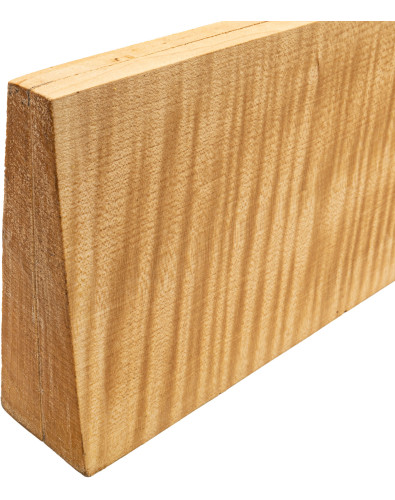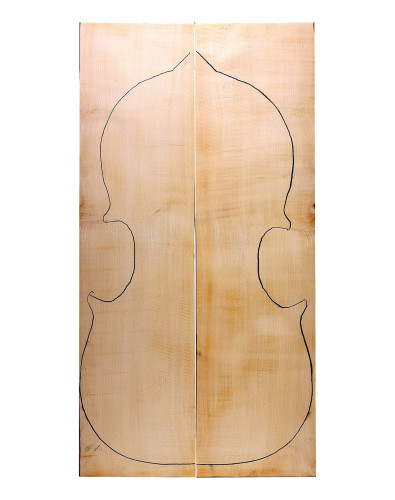- News
- 19 likes
- 2386 views
- 0 comments
Uncover the best-kept secrets for highlighting curly wood
Have you ever wondered why in some instruments highlights such an spectacular wood curly that it seems to come alive?
The curl or figure in wood, a "defect" that experts have turned into an icon of aesthetic beauty in lutherie, is a quirk of nature that can be caused by disease or winds buffeting trees as they grow. This mysterious feature adds unique value to each piece, ensuring every instrument tells its own story.
Lutherie is more than just a craft; it's an art form where every detail matters, and wood selection is crucial. Imagine a unique piece of wood, its natural beauty enhanced through artisanal techniques, highlighting every peculiarity. In this art, even what forms as a defect, such as flame figure or bird's eye, becomes an aesthetic touch that distinguishes and captivates.

Discover the perfect stains and application methods to make your wood shine like never before
Wood preparation
Preparing the wood is an essential part of the process to highlight grain and figure through varnishing. This stage defines the aesthetics of the final finish. We must envision the texture or finish we want to achieve to proceed from wood preparation.
The sanding process
Typically, sanding with progressively finer grits is used, starting from 150, 200, 360, up to 800 grits. At each grit change, it's recommended to moisten the wood to raise the grain and achieve a better result.
Scraper finish
In traditional classical lutherie, the scraper finish is one of the most widely used techniques.
The scraper or blade finish gives the instrument a particular texture that accentuates the grain and beauty of the wood. While it's a more challenging technique to master, once achieved, it makes the polishing work much faster and more pleasurable. This finish tends to highlight the texture and figure, though the finish isn't perfectly uniform and mirror-like.
Essentially, what we observe are undulating fibers that, when cut straight, create parts where they're standing up and parts where they're horizontal. This is why we see color changes, generating lines perpendicular to the grain.
Applying wood filler
Once the wood is sanded, different types of fillers are used as preparation before varnishing. These range from the most natural, based on gelatin or animal glue, to cooked natural oils, some made from nitrocellulose or water-based varnishes. The type of filler used depends on the desired finish.
Among the different ways to enhance figuring in classical lutherie, for instruments in the violin family, for example, the goal is to do so without obscuring the grain or figure. To achieve this, different background colors and varnish are used in superimposed layers to make it more evident. For background colors, natural substances like saffron or turmeric in alcohol, coffee or tea in water, or some chemicals like sodium or potassium nitrite are typically used, which produce a beautiful background color through oxidation when exposed to light.
Best protection and finishing products for figured wood
Among the best protection and finishing products for figured wood, there are also methods using synthetic water-based or oil-based dyes applied evenly to the surface. Flamed or curly wood has areas where the grain is end-grain and absorbs more pigment, so when a very fine sandpaper is passed over it, the areas where the fibers are horizontal are exposed again, producing greater contrast.
A highly beneficial application system to highlight wood figure is as follows:
- Wood filler
- Base color background
- Clear varnish (two or three coats)
- Tinted varnish (as needed to achieve desired color)
- Clear varnish (as many coats as necessary to cover and polish according to the desired finish)
It's crucial to consider the type of final finish or varnish we'll use to correctly choose the method for accentuating the figure. Always ensure that the dyes and subsequent varnishes are compatible.
Oil-based dyes cannot be used with water-based or alcohol-based varnishes. However, water-based products will be much more compatible with any type of varnish.
Enhance wood figure with Maderas Barber
Don't settle for mediocre results - enhance the beauty of curly wood with Maderas Barber. From surface preparation to the final finish, we guide you with quality products and personalized advice to achieve exceptional results.
Discover our selection of wood fillers, water-based or oil-based dyes, and nitrocellulose varnishes, a carefully curated selection of products to ensure compatibility and enhancement of wood grain.
Visit our online store or come to our physical shop for help finding the most suitable lutherie products to work with wood and highlight its curly.
















